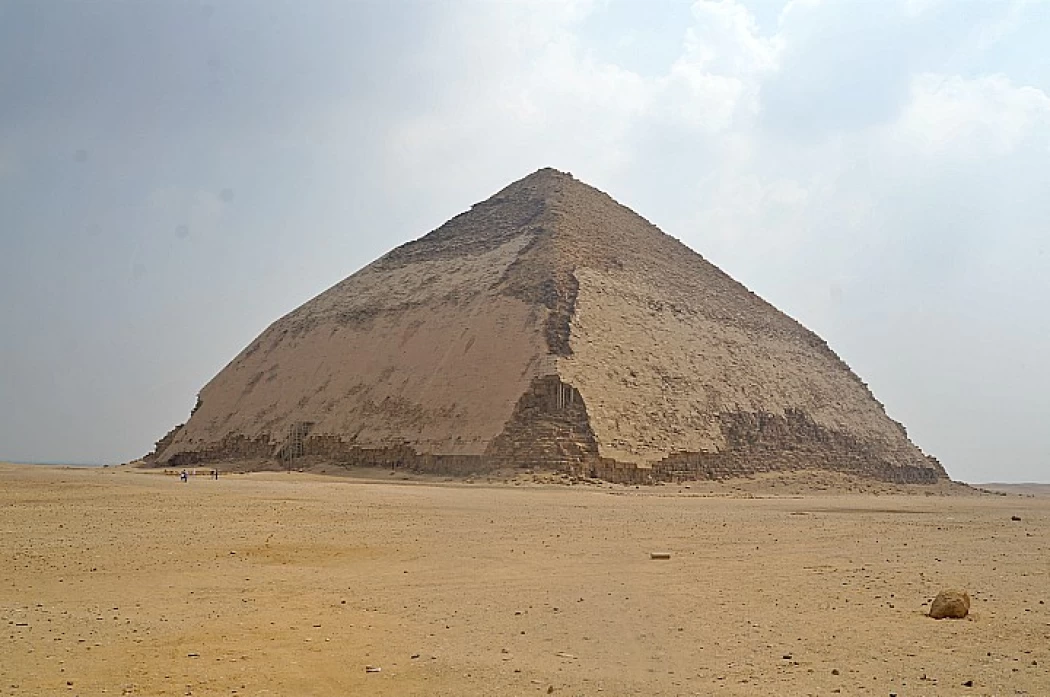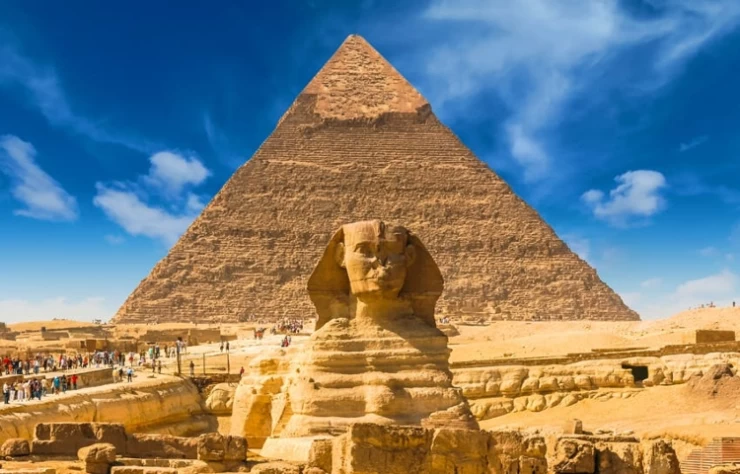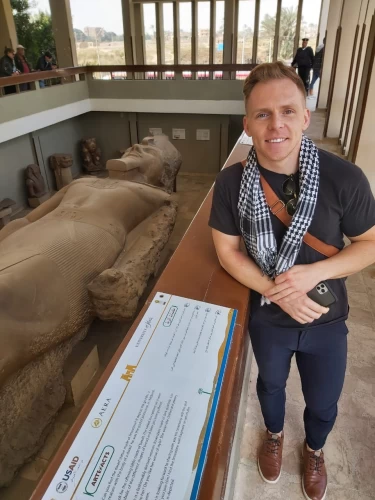
Wie wurden die großen Pyramiden gebaut? | Mythos der Pyramiden
Wie wurden die großen Pyramiden gebaut?
Sind Sie vollständig geimpft?
Dann müssen Sie bei Ihrer Ankunft am internationalen Flughafen von Kairo keinen PCR-Test vorlegen, um einen einmaligen Urlaub im Land der Pharaonen zu genießen.
In diesem Artikel zeigen wir Ihnen, wie die Pyramiden von Gizeh gebaut wurden.
Mythos der Pyramiden
Die alten Ägypter verwendeten eine große Anzahl von Arbeitskräften beim Bau der Pyramiden, die am Bau der Cheopspyramide beteiligt waren, die aus der 4.
Dynastie während des alten Königreichs der alten ägyptischen Geschichte stammt und sich in Gizeh zwischen 20.000 und 30.000 Mann befand Es dauerte ungefähr 23 Jahre.
Es sollte angemerkt werden, dass es nicht die Sklaven waren, die an seinem Bau teilnahmen, sondern diejenigen, die an seinem Bau teilnahmen, sind freie Männer. Sie waren von der Zahlung von Steuern befreit und gaben ihnen Kleidung, Wohnraum und Freiheit Sie erhielten all das als Anerkennung für ihre Bemühungen und um sie zu ermutigen, ihre Arbeit ohne Unterbrechung fortzusetzen.
Die Arbeiter verwendeten eine Vielzahl von Werkzeugen, um die beim Bau der Pyramiden verwendeten Blöcke zu schneiden, darunter Granithämmer und Kupfermeißel. Sie bauen sich mit Hilfe großer Holzschlitten durch den Sand und werden über den nassen Sand gezogen, wodurch sich die Zugkraft halbiert. Die Pyramidenbauer bauten Lehmziegelleitern und bedeckten sie dann mit Wachsspänen, um ihre Oberfläche zu härten, damit sie die Steine nach oben ziehen konnten, bis sie ihren genauen Platz in der Pyramide erreichten, und wiederholten diese Schritte jedes Mal, wenn sie aufstiegen.
Wir konnten diese Methode offensichtlich als Grund dafür beweisen, dass diese Art von Rampe oben auf dem ersten Pylon des Karnak-Tempels während des Luxor-Tages besucht wurde.
Erleben Sie den Zauber Ägyptens, wo alles beginnt, mit dem professionellen Team von Cairo Top Tours. Starten Sie jetzt Ihr Abenteuer und erleben Sie den besten Urlaub in Ägypten. Sie finden hier die besten Ägypten-Osterangebote und -Urlaube 2024. Der Frühling in Ägypten ist perfekt und die Atmosphäre ist unsagbar schön. Wir organisieren tolle und unterhaltsame Ägypten Ausflüge wie Kairo Tagestouren. Schauen Sie sich unsere Ausflüge und Reisen mit angemessenen Preisen an, die für alle Arten von Touristen im Jahr 2024 geeignet sind, sowie Ägypten Landausflüge, zusätzlich zu Kairo Tagestouren vom Flughafen und Kairo Zwischenlandung Tour. Sie können das antike Theben erkunden, beginnend mit dem Tal der Könige und dem Westufer von Luxor, sowie den Karnak-Tempel und den Luxor-Tempel. Ägypten Touren erweitern, um den Tempel von Edfu von Gott Horus der Falke, und Kom Ombo Tempel und Abu Simbel zu decken. All dies während Assuan-Tagestouren und Luxor-Tagestouren. Das Rote Meer ist einer der malerischsten Orte, die Sie in Ägypten besuchen können, genießen Sie einige Meeresabenteuer und Wanderaktivitäten wie Hurghada Tagestouren und Sharm El Sheikh Ausflüge. Sichern Sie sich jetzt Ihren Platz in unseren Ägypten-Reisepaketen und Wüstensafari-Trips, um von Kairo aus die Oasen Siwa, Bahriya und Farafra sowie die Oasen Dakhla und Kharga zu bereisen! Wir sehen uns wieder.
The Construction Mechanisms of the Pyramids: Estimating the Engineering Feats of the Ancient Egyptians
The Giza Pyramids are some of the greatest buildings that were ever designed and built, and the workforce that existed in those days was just extraordinary and incredible. These massive structures, particularly the Giza period pyramid, have puzzled historians, archeologists, and engineers for many ages, imbued with the perennial query of how such structures were even raised in the first place. These constricting structures were lifted by ancient people exercising modern-day power, construction engineering, and most fundamentally, physics and material science.
In this paper, let us specifically deal with the Giza Pyramids, their construction and techniques that were employed, the tools brought in, and the people present in the country.
The Workforce Behind the Pyramids: Myth vs. Reality
A widely held belief that the Pyramids were built by slaves has been proven to be false by recent studies. The Great Pyramid of Cheops (Khufu), which was constructed within the fourth dynasty of Old Kingdom Egypt, was constructed by skilled laborers and not by slaves. Estimates have suggested that between 20,000 and 30,000 men took part in the construction work, and this lasted about twenty-three years.
Rather than being enslaved, these workers received proper payments for their work. More so, they were also given accommodation, food, and clothing in return for their services, which included a tax waiver. These were aimed at ensuring that they took part actively in the building of the pyramid for as long as it took and appreciating their input.
Instruments and Components
The builders of the pyramids may have had a whole arsenal of cutting and measuring tools to cut and shape the large die stones, which are the building blocks of the pyramids. However, while the shell of most pyramids was built of limestone, the core of these structures was more advanced materials, especially granite, which required more sophisticated tools. There was a granite hammer to first carefully shape the rock statues, a few basic copper chisels, and other items that were quite artistic with stone engraving.
One of the main challenges in the process of building the pyramids was that they not only had to be built, but there were massive stone slabs to be carried, which weighed about 15 tons each, among others. It is believed that the ancients would use wooden sleds and load the stone blocks on them and then drag the blocks over the sand. Watering the sand ahead of the sleds was another technique since this reduced the resistance to pulling the stones. Studies revealed that this method of wetting the sand can help reduce the force of pulling by as much as fifty percent, making it very convenient to move heavy stone blocks.
The Use of Ramps in Pyramid Construction
One of the most fascinating techniques that the Egyptians used in the construction of the pyramids was the application of ramps. Workers made use of rampways made of mud bricks with a coating of wax chips to enhance the durability of the surface. These ramps enabled the workers to pull the heavy stone blocks to the higher levels of the pyramid and, more so, to position them correctly.
This process would be repeated layer after layer of stones until the pyramid reached its full height, with additional ramps being constructed to enable the lifting of stones. These ramps played an important role in the whole process of construction, and remains of such ramps have been discovered in other parts of Egypt, including temples like the Karnak Temple in Luxor and an incomplete pyramid from the period of Djedefre, both from the Old Kingdom.
The historical ramps' construction principles have neither been agreed upon nor dismissed by historians and engineers. Some contend straight “runners” could be built on one face of the pyramid; others contend a more complicated set of systems, including zigzag-forming runners or even runners that wrapped around the pyramid. In whatever shape, designed, and built, these ramps were major for moving the heavy stone blocks to the more elevated sections of the pyramid.
The most interesting thing about the Giza Pyramids is the way they were built perfectly, and their alignment was unquestionable. The Great Pyramid has its sides aligned to face the four cardinal points of the compass with unimaginable precision, a task that would be beyond someone who didn’t understand geometry and astronomy at an advanced level.
To avoid the bulging of the pyramid while building it, the ancient Egyptians probably made use of various measuring devices like plumb lines and set squares. The sharpness of the design is illustrated by the almost equal size of the base and the extreme rise of
the sides of the pyramid, which remain unchanging even at higher levels.
For many centuries, the successful execution of this alignment has been a subject of admiration and wonder. The angles are strikingly accurate, and the mathematical proportions of the construction allow one to understand why the ancient Egyptians were geometry masters and how to build from the bottom of the pyramid to its peak while preserving its shape.


















